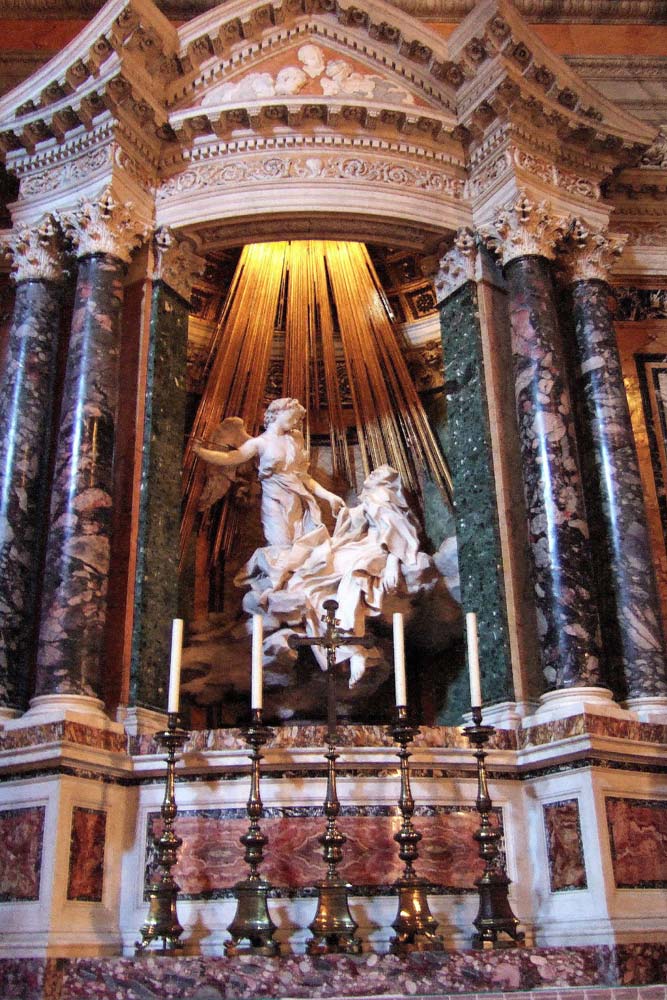| Ecstasy of Saint Teresa | |
|---|---|
 |
|
| Artist | Gian Lorenzo Bernini |
| Year | 1647–1652 |
| Medium | Marble |
| Location | Santa Maria della Vittoria, Rome |
| Dimension | H: 138 in (350 cm) |
| Gian Lorenzo Bernini Artworks | |
| Apollo and Daphne | |
| David | |
| Ecstasy of Saint Teresa | |
| Bust of Louis XIV | |
| Fontana dei Quattro Fiumi | |
| Medusa | |
| Complete Works |
The Ecstasy of Saint Teresa is a white marble sculpture that was created by Gian Lorenzo Bernini. Bernini was considered one of the great sculptors of his day. The sculpture was commissioned by a Venetian Cardinal and was completed in 1652. It currently rests in Santa Maria della Vittoria Church in Rome, Italy. The sculpture depicts Saint Teresa of Ávila and is widely regarded as a masterpiece among Roman Baroque sculptures.
The Image and the Story
The Ecstasy of Saint Teresa depicts a scene that Teresa wrote about in her own autobiography. In it, she described an angel who pierced her heart multiple times with fire-tipped spear. This act sent her into what she described as a spiritual rapture.
The sculpture shows a lithe, delicate angel who resembles cupid holding an arrow aloft, poised to strike Teresa. With curly hair and dainty features, the angel has a graceful air. Theresa herself seems to have collapsed. Her eyes are closed and her head is thrown back in what seems to be rapture. Bronze rains down behind the sculpture, seeming to illuminate it, and the figures appear to float on a cloud.
Distinguishing Features
To fully understand this sculpture it is necessary to understand its relation to the entire church where it is located. It is actually the center of a complete composition that consists of sculpture, painting, and even architecture- all of which was created by Bernini himself. Everything from the dark columns which make the sculpture look brighter to the stained glass windows which illuminate and add to the story work together to form one complete artistic whole.
The nuances of the sculpture are also wondrous to behold, as you can almost feel the sharpness of the arrow and the weight of Teresa’s clothing.
Interpretations
Many critics and art historians have interpreted this work to depict the melding of sensual and spiritual pleasure, with some going so far as to state that the sculpture depicts the moment of orgasm. However, it is viewed as more likely that Bernini merely intended to depict intense joy.